
CURATOR’s EYE
3 minutes Art -Nobuo Ishii-
Follow TRiCERA on Instagram and check out our creative artists
5%OFF & free shipping 1st purchase
FIRSTART5
10%OFF 2nd purchase after 1st purchase!
Welcome to TRiCERA
Hi there! We are pleased to have you here 🎉
Could you please describe yourself?
Guest
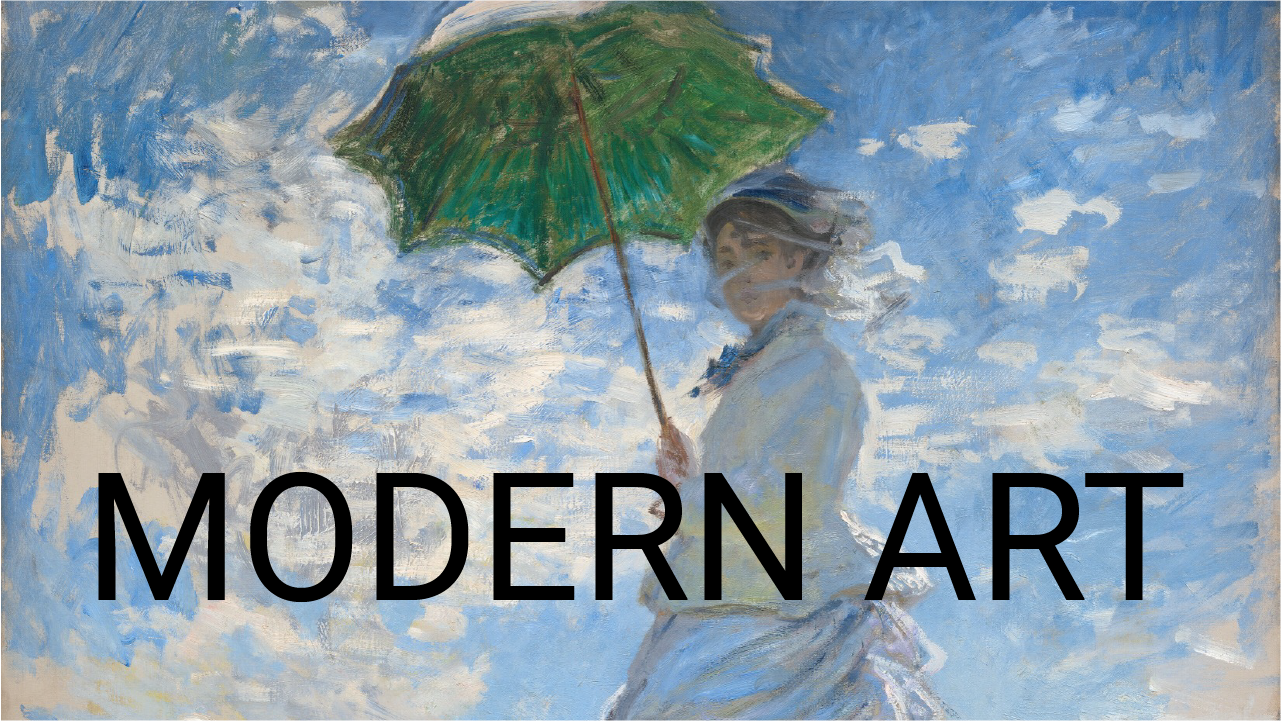
Claude Monet Woman with a Parasol - Madame Monet and Her Son, 1875, Oil on Canvas
Modern art is an art movement that emphasizes experimentation and embraces ideas and styles that depart from the traditional art styles of the past.
Specific artists include the Impressionists such as Claude Monet, Vincent van Gogh,Paul Gauguin,Paul Cézanne, andGeorges Seurat, and the Late Impressionists. It can be said that these art movements were major players in the development of "modernity" in the art field. Generally speaking, modern art is defined as art produced from the 1860s to the 1970s.
Art produced after the 1970s, when conceptual art became mainstream, is called " contemporary art " and is distinguished from modern art.
The term "modern" generally refers to the period of capitalist and civil society after the feudalistic era and the Middle Ages, i.e., the era of " individualism" and "democracy. Modernism refers to a stance that takes a position of respect for individual rights and freedoms vis-à-vis the authority of the state and society.
According to the International Encyclopedia Britannica, the ideological trends that characterized modernity include individualism, rationalism, secularization, and liberalism.
In light of the origins of "modernity," it can be said that the essence of modern art is democratic art that asserts individual freedom and opposes the propaganda art of the pre-modern era that promoted the authority of dynasties and religious states.
The germ of modern art can be seen in the works of Francis de Goya,Eugène Delacroix, andGustave Courbet. Over the next 100 years, it grew slowly in response to existing art styles, and has had a profound influence on the artists of today.
This article provides a comprehensive overview of the development of Western art, particularly in the field of painting, from the end of the 18th century through the 19th and 20th centuries.
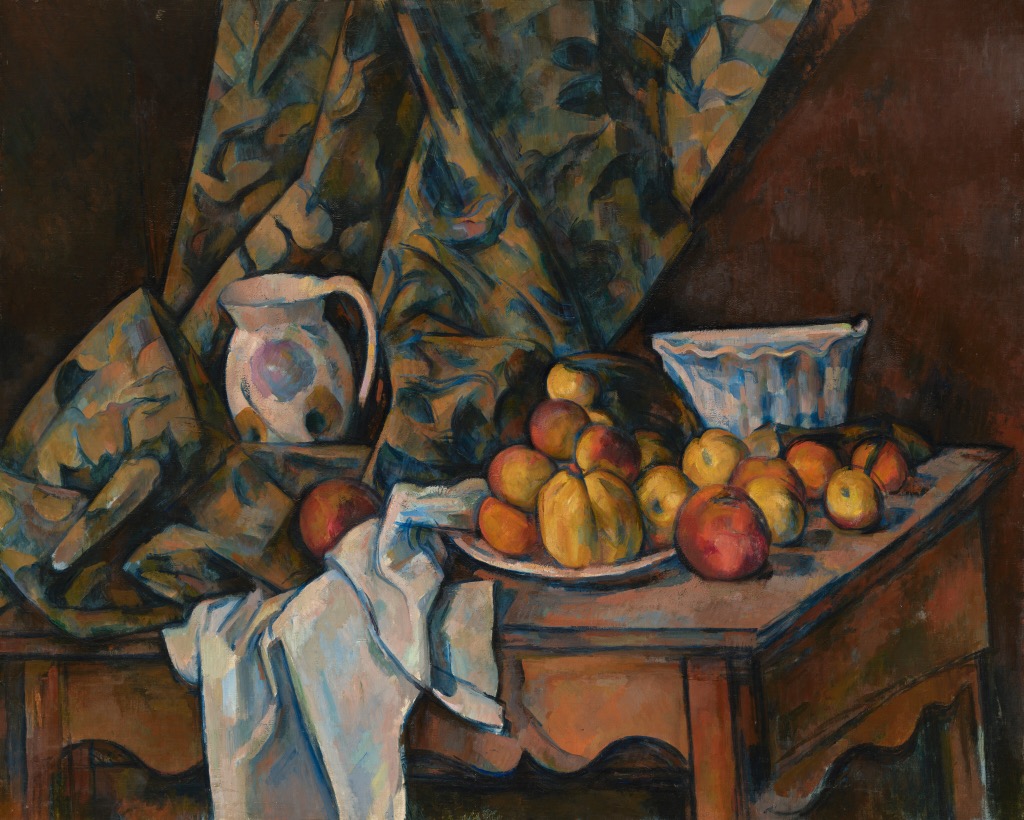
Paul Cezanne Still Life with Apples and Peaches,1905, Oil on Canvas
💡Modernity refers to the post-medieval and post-feudalist period in the West.
💡Modern art is an art historical category that refers to works created under individualistic values.
💡Modern art mainly refers to works from the 1860s to the 1970s.
The term "modern" is often used in areas of art other than painting. Modern sculpture and architecture are considered to have appeared at the end of the 19th century, while modern painting was established a bit earlier. The year generally regarded as the birth year of modern painting is 1863. This was the year that Edouard Manet caused a scandal when he exhibited " Lunch on the Grass " at the Salon de Paris, an exhibition of works that had been rejected by the art world of the time, and was criticized by the critics.
The starting point of modern painting is a matter of debate, and several dates before 1863 have been proposed. For example, some scholars consider Gustave Cour bet's 1855 "Painter's Studio" and Jacques-Louis David' s 1784 "The Oath of the Brothers Horatius" to be the beginning of modern art.
In addition, Francis de Goya, who painted a series of black paintings, and Eugène Delacroix, who depicted the French Revolution, can be regarded as the germ of modern art. However, the 20th century American art historian Arnason ( Hjorvardur Harvard Arnason, 1909 - 1986) states the following.
Each date is significant in the development of modern art, but they are not entirely new beginnings. Modern art has been generated slowly over a hundred years."
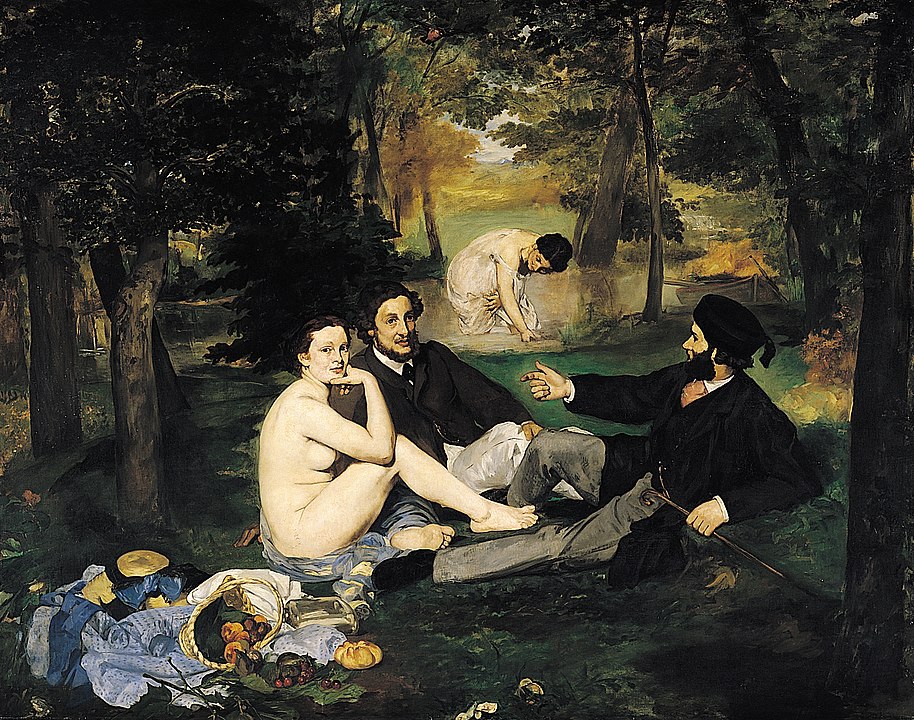
Edouard Manet Le Déjeuner sur l'herbe, 1862, Oil on Canvas
Let us now make a few references to the political system and thought that formed the background of "modern" art.
The first seeds of thought associated with modern art can be traced back to the Enlightenment of the 18th century. Art critic Clement Greenberg described philosopher Emanuel Kant as the " first actual modernist" and said that "the Enlightenment criticizes from without, modernism criticizes from within" ( "Modernist Painting," 1961). Behind the establishment of the Enlightenment lies a period of social and cultural regression in medieval Western Europe, known as the "Dark Ages. The Enlightenment preached rationalism, criticizing "from the outside" the illogical and mystical ideas that were the emotional support of a people weary of the disease and plague and political regression that prevailed in the Middle Ages. This is called "Enlightenment," which means "to enlighten the darkness. In contrast, Greenberg's statement that "modernism criticizes from within" means that "modernism is a self-referential process that adopts a particular system for the purpose of self-criticism of the system.
In his Critique of Judgment (1790), Kant discussed the problem of aesthetic judgment based on the existence of subjectivity. In this book, Kant may be said to have predicted the shift from traditional values, which held the classical ideal of beauty as an absolute norm, to modern values, which relativize beauty as subjective and recognize its diversity.
The French Revolution of 1789 and the subsequent Napoleonic rule in Europe created the social conditions for the emergence of modern art by eradicating the traditional political and social institutions to which people had been accustomed for centuries. In Jacques-Louis Tavid's "Consecration of Emperor Napoleon I" and Angle's "Napoleon I on the Throne," the main characters were not kings or popes, but individuals who rose to supreme power through the overwhelming charisma of the common people.
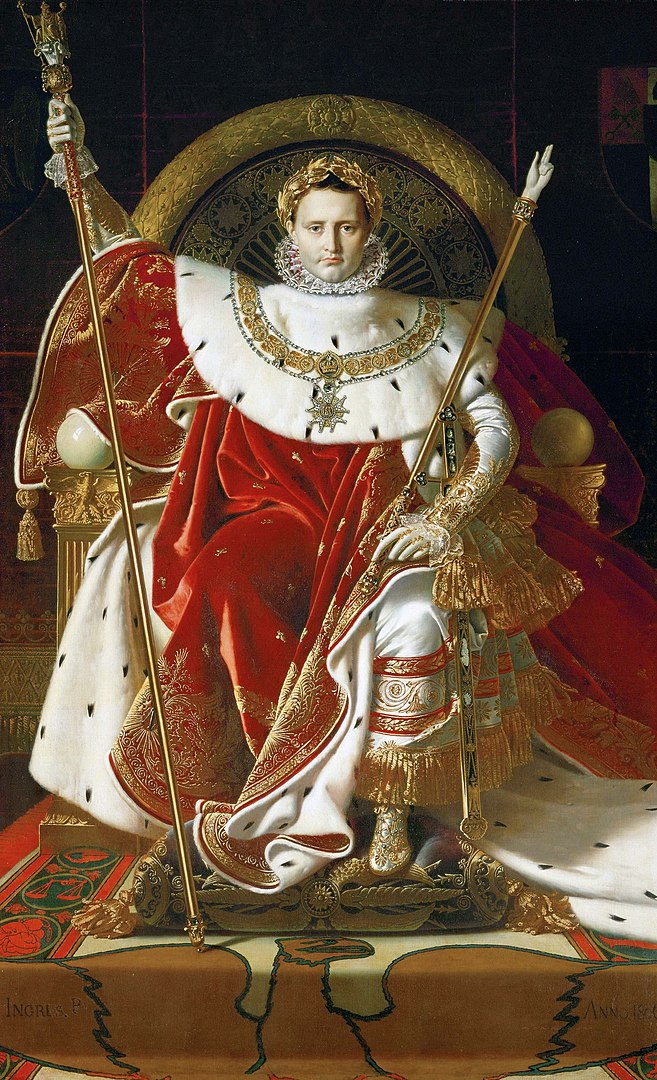
Dominique Angle Napoléon Ier sur le trône impérial, 1806, Oil on canvas
The above-mentioned ideological background may not have been clearly recognized by individual artists at the time. In this section, we will explain some of the points that had a more direct impact.
The term "manners and customs" here refers to the customs, traditions, and conventions of daily life.
It differs significantly from pre-modern art in that in the 19th century, many artists began to freely depict people, places, and ideas of personal interest as subjects on canvas.
In 19th century Europe, in France and many other countries, "history painting" (narrative painting), which used traditional realistic techniques to depict myths, the Bible, and historical allegories as subjects, was the main form of art. However, as civil society progressed, the number of painters working on popular subjects gradually increased, and portraits, genre paintings, and landscapes became more common.
Furthermore, with the publication of Sigmund Freud' s "The Dream Judgement" in 1899, the "world of the unconscious" became the focus of interest for many artists, who began to study subjects such as dreams, symbolism, and the inner world as motifs for expressing their own experiences.
Under this trend, painters began to experiment with color, non-traditional materials, and new means of expression.
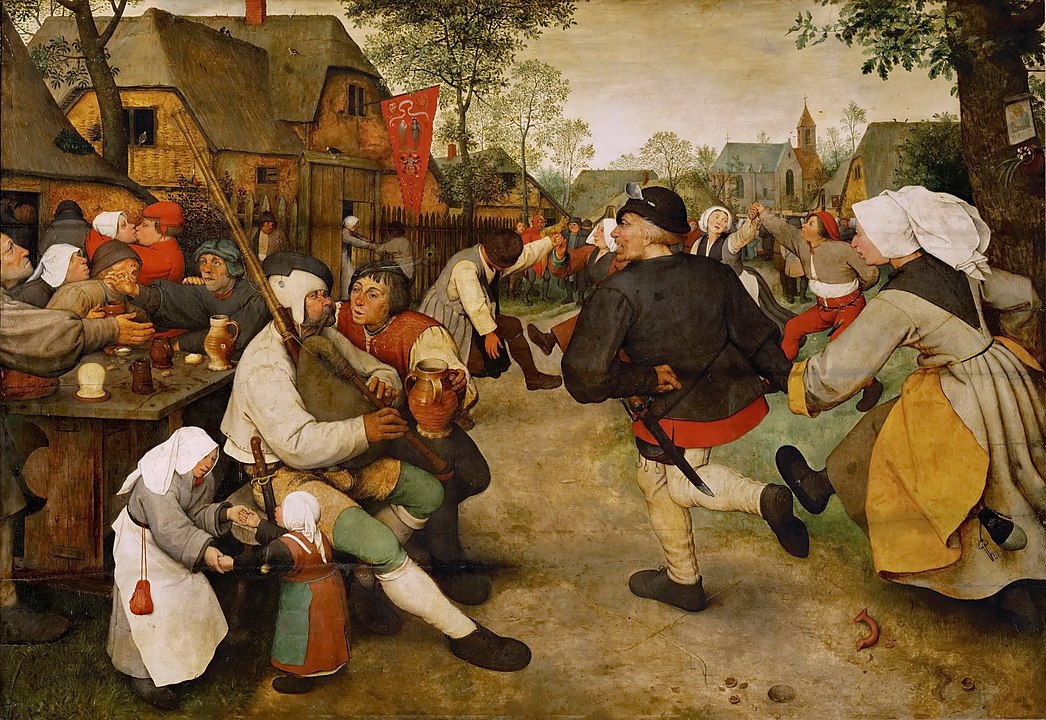
Peasant Dance by Pieter Brueghel the Elder
One of these "new means of expression" was the invention of photography in the 1830s. At the end of the 19th century, motion pictures emerged. With the advent of these technologies came a change in the social role of painting.
Until then, the notion that "painting must depict the world in a realistic manner" had been the dominant notion, even without reiterating it. However, with the advent of photography, the idea that realism can be left to photography, or, from a more subjective point of view, that the work of painters, such as portraits and news pictures, which had functioned as records, has been "taken over" by photographers, has sprouted.
From a more positive perspective, it can be said that people began to be more aware that they did not necessarily need to paint realistically. As a result, paintings with rough brushstrokes left to the last, paintings depicting dreams and hallucinations, and paintings that "use the landscape" in order to "paint a painting" instead of "painting the landscape" began to be consciously produced. In particular, the last type of art, self-objective art, which was created for the purpose of "painting," was innovative in the history of art as a feature of modern painting that had never existed before. Art for Art's Sake," or the self-objective nature of art (and, more developmentally, its self-criticism), is a fundamental requirement of post-modern art that has been handed down from generation to generation, even among contemporary artists.
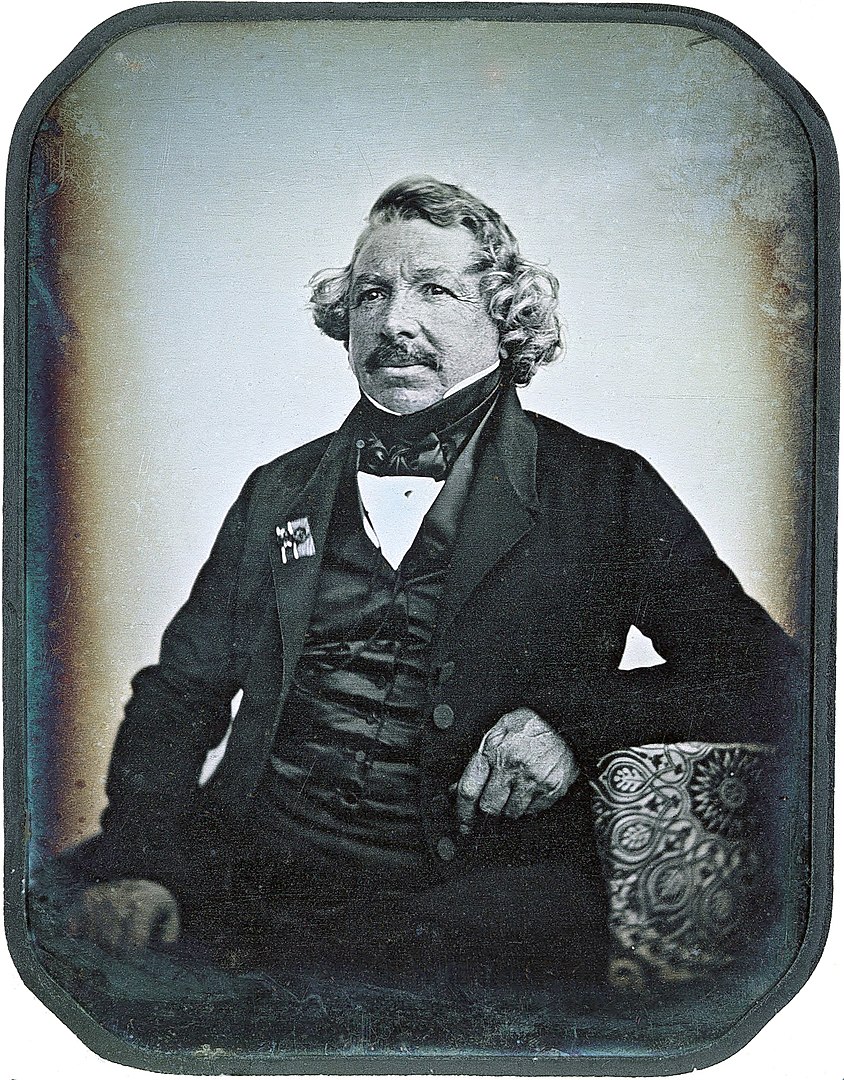
Daguerreotype of Louis Daguerre in 1844 by Jean-Baptiste Sabatier-Blot
The concept of " artistic movements" is indispensable in the study of modern art.
An artistic movement is "an artistic tendency or style with a specific common artistic philosophy or goal. An artistic movement usually consists of several artists working under a philosophy or goal defined by a founder or critic, etc., in a style consistent with that philosophy or basic concept. Alternatively, there are art movements that are newly defined by art historians at a later time, separate from the artists' activities.
Unlike the medieval and feudal periods, when absolute political and religious power defined artistic values, in modern art, "artistic movements" guarantee artistic values. Art movements that are innovative while maintaining a connection to the continuous flow of Western art history (context) are accepted as avant-garde expression and become classics through further selection by the times.
This context-driven approach to value judgments is mainstream in the contemporary art world. Artists, gallerists, critics, collectors, and other players in the art world pay close attention to the works and artists of modern art and their influences on contemporary artists, and the major art movement of modern art continues to be an important indicator for judging the innovation of contemporary art. The major art movement of Modern Art continues to be an important indicator in judging the innovations of contemporary art.
Within the broad category of Modern Art, there is a mixture of several artistic movements. Let us look at some of the most representative ones.
The representative early art movements are Romanticism ,Realism, andImpressionism, which emerged between the end of the 18th and 19th centuries. At the same time, the decorative arts of the East - the Japanese ukiyoe prints - became all the rage as "Japonisme" and revolutionized Western art in terms of color. Van Gogh famously copied ukiyoe prints in oil. Later, Post-Impressionism and Symbolism emerged at the end of the 19th century.
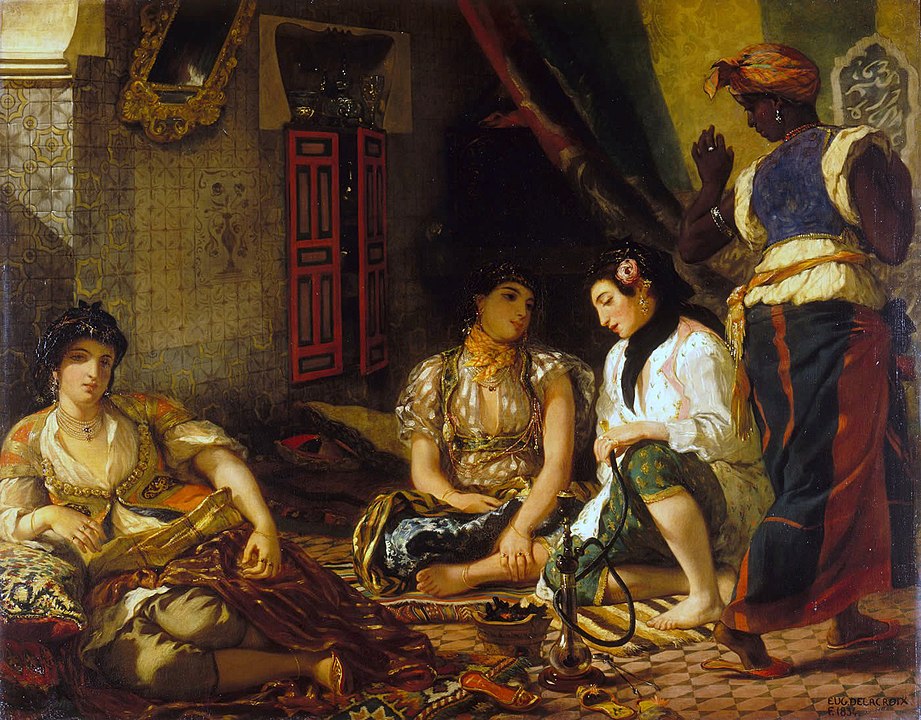
Eugène Delacroix Femmes d'Alger dans leur appartement, 1834, Oil on canvas
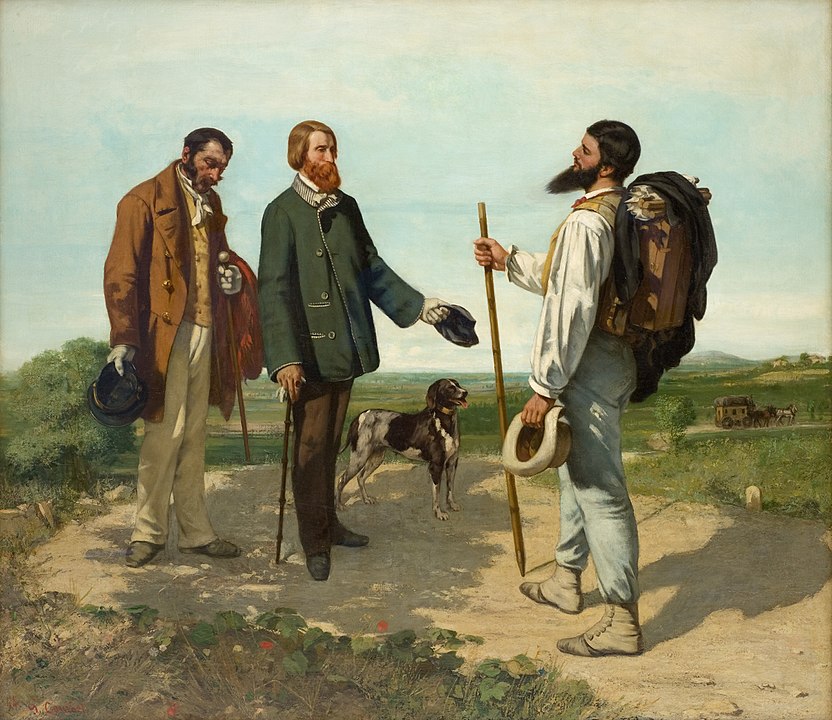
Gustave Cour bet Bonjour Monsieur Courbet, 1854, Oil on Canvas
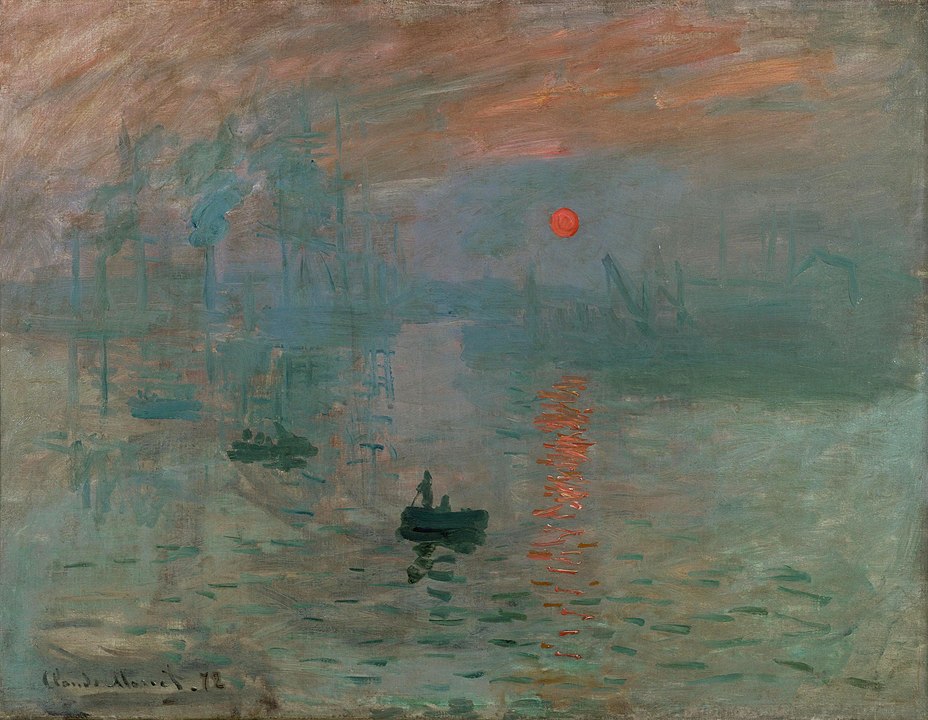
Claude Monet Impression, soleil levant, 1872, Oil on Canvas

Writer
TRiCERA ART

Claude Monet Woman with a Parasol - Madame Monet and Her Son, 1875, Oil on Canvas
Modern art is an art movement that emphasizes experimentation and embraces ideas and styles that depart from the traditional art styles of the past.
Specific artists include the Impressionists such as Claude Monet, Vincent van Gogh,Paul Gauguin,Paul Cézanne, andGeorges Seurat, and the Late Impressionists. It can be said that these art movements were major players in the development of "modernity" in the art field. Generally speaking, modern art is defined as art produced from the 1860s to the 1970s.
Art produced after the 1970s, when conceptual art became mainstream, is called " contemporary art " and is distinguished from modern art.
The term "modern" generally refers to the period of capitalist and civil society after the feudalistic era and the Middle Ages, i.e., the era of " individualism" and "democracy. Modernism refers to a stance that takes a position of respect for individual rights and freedoms vis-à-vis the authority of the state and society.
According to the International Encyclopedia Britannica, the ideological trends that characterized modernity include individualism, rationalism, secularization, and liberalism.
In light of the origins of "modernity," it can be said that the essence of modern art is democratic art that asserts individual freedom and opposes the propaganda art of the pre-modern era that promoted the authority of dynasties and religious states.
The germ of modern art can be seen in the works of Francis de Goya,Eugène Delacroix, andGustave Courbet. Over the next 100 years, it grew slowly in response to existing art styles, and has had a profound influence on the artists of today.
This article provides a comprehensive overview of the development of Western art, particularly in the field of painting, from the end of the 18th century through the 19th and 20th centuries.

Paul Cezanne Still Life with Apples and Peaches,1905, Oil on Canvas
💡Modernity refers to the post-medieval and post-feudalist period in the West.
💡Modern art is an art historical category that refers to works created under individualistic values.
💡Modern art mainly refers to works from the 1860s to the 1970s.
The term "modern" is often used in areas of art other than painting. Modern sculpture and architecture are considered to have appeared at the end of the 19th century, while modern painting was established a bit earlier. The year generally regarded as the birth year of modern painting is 1863. This was the year that Edouard Manet caused a scandal when he exhibited " Lunch on the Grass " at the Salon de Paris, an exhibition of works that had been rejected by the art world of the time, and was criticized by the critics.
The starting point of modern painting is a matter of debate, and several dates before 1863 have been proposed. For example, some scholars consider Gustave Cour bet's 1855 "Painter's Studio" and Jacques-Louis David' s 1784 "The Oath of the Brothers Horatius" to be the beginning of modern art.
In addition, Francis de Goya, who painted a series of black paintings, and Eugène Delacroix, who depicted the French Revolution, can be regarded as the germ of modern art. However, the 20th century American art historian Arnason ( Hjorvardur Harvard Arnason, 1909 - 1986) states the following.
Each date is significant in the development of modern art, but they are not entirely new beginnings. Modern art has been generated slowly over a hundred years."

Edouard Manet Le Déjeuner sur l'herbe, 1862, Oil on Canvas
Let us now make a few references to the political system and thought that formed the background of "modern" art.
The first seeds of thought associated with modern art can be traced back to the Enlightenment of the 18th century. Art critic Clement Greenberg described philosopher Emanuel Kant as the " first actual modernist" and said that "the Enlightenment criticizes from without, modernism criticizes from within" ( "Modernist Painting," 1961). Behind the establishment of the Enlightenment lies a period of social and cultural regression in medieval Western Europe, known as the "Dark Ages. The Enlightenment preached rationalism, criticizing "from the outside" the illogical and mystical ideas that were the emotional support of a people weary of the disease and plague and political regression that prevailed in the Middle Ages. This is called "Enlightenment," which means "to enlighten the darkness. In contrast, Greenberg's statement that "modernism criticizes from within" means that "modernism is a self-referential process that adopts a particular system for the purpose of self-criticism of the system.
In his Critique of Judgment (1790), Kant discussed the problem of aesthetic judgment based on the existence of subjectivity. In this book, Kant may be said to have predicted the shift from traditional values, which held the classical ideal of beauty as an absolute norm, to modern values, which relativize beauty as subjective and recognize its diversity.
The French Revolution of 1789 and the subsequent Napoleonic rule in Europe created the social conditions for the emergence of modern art by eradicating the traditional political and social institutions to which people had been accustomed for centuries. In Jacques-Louis Tavid's "Consecration of Emperor Napoleon I" and Angle's "Napoleon I on the Throne," the main characters were not kings or popes, but individuals who rose to supreme power through the overwhelming charisma of the common people.

Dominique Angle Napoléon Ier sur le trône impérial, 1806, Oil on canvas
The above-mentioned ideological background may not have been clearly recognized by individual artists at the time. In this section, we will explain some of the points that had a more direct impact.
The term "manners and customs" here refers to the customs, traditions, and conventions of daily life.
It differs significantly from pre-modern art in that in the 19th century, many artists began to freely depict people, places, and ideas of personal interest as subjects on canvas.
In 19th century Europe, in France and many other countries, "history painting" (narrative painting), which used traditional realistic techniques to depict myths, the Bible, and historical allegories as subjects, was the main form of art. However, as civil society progressed, the number of painters working on popular subjects gradually increased, and portraits, genre paintings, and landscapes became more common.
Furthermore, with the publication of Sigmund Freud' s "The Dream Judgement" in 1899, the "world of the unconscious" became the focus of interest for many artists, who began to study subjects such as dreams, symbolism, and the inner world as motifs for expressing their own experiences.
Under this trend, painters began to experiment with color, non-traditional materials, and new means of expression.

Peasant Dance by Pieter Brueghel the Elder
One of these "new means of expression" was the invention of photography in the 1830s. At the end of the 19th century, motion pictures emerged. With the advent of these technologies came a change in the social role of painting.
Until then, the notion that "painting must depict the world in a realistic manner" had been the dominant notion, even without reiterating it. However, with the advent of photography, the idea that realism can be left to photography, or, from a more subjective point of view, that the work of painters, such as portraits and news pictures, which had functioned as records, has been "taken over" by photographers, has sprouted.
From a more positive perspective, it can be said that people began to be more aware that they did not necessarily need to paint realistically. As a result, paintings with rough brushstrokes left to the last, paintings depicting dreams and hallucinations, and paintings that "use the landscape" in order to "paint a painting" instead of "painting the landscape" began to be consciously produced. In particular, the last type of art, self-objective art, which was created for the purpose of "painting," was innovative in the history of art as a feature of modern painting that had never existed before. Art for Art's Sake," or the self-objective nature of art (and, more developmentally, its self-criticism), is a fundamental requirement of post-modern art that has been handed down from generation to generation, even among contemporary artists.

Daguerreotype of Louis Daguerre in 1844 by Jean-Baptiste Sabatier-Blot
The concept of " artistic movements" is indispensable in the study of modern art.
An artistic movement is "an artistic tendency or style with a specific common artistic philosophy or goal. An artistic movement usually consists of several artists working under a philosophy or goal defined by a founder or critic, etc., in a style consistent with that philosophy or basic concept. Alternatively, there are art movements that are newly defined by art historians at a later time, separate from the artists' activities.
Unlike the medieval and feudal periods, when absolute political and religious power defined artistic values, in modern art, "artistic movements" guarantee artistic values. Art movements that are innovative while maintaining a connection to the continuous flow of Western art history (context) are accepted as avant-garde expression and become classics through further selection by the times.
This context-driven approach to value judgments is mainstream in the contemporary art world. Artists, gallerists, critics, collectors, and other players in the art world pay close attention to the works and artists of modern art and their influences on contemporary artists, and the major art movement of modern art continues to be an important indicator for judging the innovation of contemporary art. The major art movement of Modern Art continues to be an important indicator in judging the innovations of contemporary art.
Within the broad category of Modern Art, there is a mixture of several artistic movements. Let us look at some of the most representative ones.
The representative early art movements are Romanticism ,Realism, andImpressionism, which emerged between the end of the 18th and 19th centuries. At the same time, the decorative arts of the East - the Japanese ukiyoe prints - became all the rage as "Japonisme" and revolutionized Western art in terms of color. Van Gogh famously copied ukiyoe prints in oil. Later, Post-Impressionism and Symbolism emerged at the end of the 19th century.

Eugène Delacroix Femmes d'Alger dans leur appartement, 1834, Oil on canvas

Gustave Cour bet Bonjour Monsieur Courbet, 1854, Oil on Canvas

Claude Monet Impression, soleil levant, 1872, Oil on Canvas

Writer
TRiCERA ART